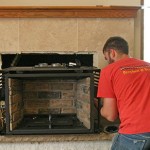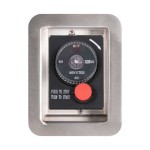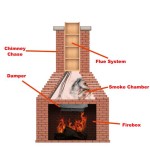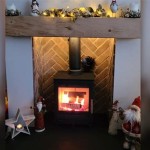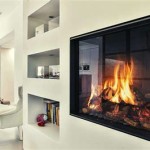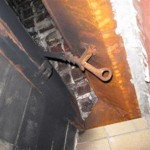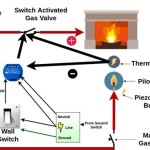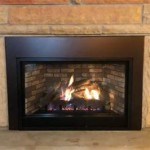Contemporary Ventless Gas Fireplaces: A Comprehensive Overview
Ventless gas fireplaces, also known as vent-free gas fireplaces, represent a modern approach to supplemental heating and ambient aesthetics within residential and commercial spaces. Unlike traditional fireplaces, these units do not require a chimney or venting system, offering greater installation flexibility. This article provides a detailed examination of contemporary ventless gas fireplaces, covering their operational principles, advantages, disadvantages, safety considerations, and available design options.
The core functionality of a ventless gas fireplace hinges on its highly efficient combustion process. These units are designed to burn propane or natural gas almost completely, minimizing the production of byproducts such as carbon monoxide (CO) and other pollutants. This near-complete combustion is achieved through precise engineering of the burner system and careful regulation of the air-to-fuel ratio. Oxygen Depletion Sensors (ODS) are critical safety components that monitor oxygen levels in the room. If the oxygen level drops below a set threshold, the ODS automatically shuts off the gas supply, preventing the buildup of dangerous gases.
Contemporary ventless gas fireplaces are often aesthetically integrated into modern living spaces, with designs ranging from sleek, minimalist models to units that mimic the appearance of traditional wood-burning fireplaces. The realistic flame patterns, simulated embers, and optional decorative logs contribute to the visual appeal, making them a popular choice for homeowners seeking both warmth and ambiance.
Operational Principles and Efficiency
The efficiency of a ventless gas fireplace is a key distinguishing factor compared to vented models. Because no heat is lost through a chimney or flue, the vast majority of the heat generated by the burning gas is directly radiated into the room. This results in significantly higher heating efficiency, often exceeding 99 percent. This high efficiency translates to lower energy bills and reduced fuel consumption, particularly when used as a supplemental heating source in specific areas of the home.
The operation is controlled through various mechanisms, ranging from simple manual controls to sophisticated remote control systems. These controls allow users to adjust the flame height and heat output, providing customizable comfort levels. Some models also incorporate thermostats, enabling automatic temperature regulation. The burner system is typically constructed from durable materials such as stainless steel or cast iron, ensuring long-term reliability and resistance to corrosion.
The ODS system works by continuously monitoring the oxygen content of the air. A small pilot light flame heats a thermocouple, which generates a small electrical current. This current keeps a valve open, allowing gas to flow to the main burner. If the oxygen level drops, the pilot light flame diminishes, reducing the electrical current and causing the valve to close, cutting off the gas supply. This is a crucial safety feature that prevents the accumulation of carbon monoxide.
Maintenance of ventless gas fireplaces is relatively straightforward. Regular cleaning is necessary to remove dust and debris from the burner and surrounding areas. It is also essential to periodically inspect the ODS system to ensure it is functioning correctly. Professional servicing by a qualified technician is recommended on a regular basis, typically every year, to ensure optimal performance and safe operation.
Advantages and Disadvantages
Ventless gas fireplaces offer several advantages over traditional and vented gas fireplaces. The primary advantage is the ease of installation. Without the need for a chimney or vent, these units can be installed in almost any room of a house, provided that the room meets minimum size and ventilation requirements. This simplifies the installation process and reduces the associated costs. Also, the high heating efficiency, as previously mentioned, translates to lower energy bills and reduced fuel consumption. As a supplemental heat source, a ventless fireplace can provide targeted warmth to a specific area, reducing the need to heat the entire house.
Another often-overlooked advantage is the aesthetic versatility. Contemporary designs range from minimalist linear styles to traditional fireplace designs. Many ventless fireplaces come with realistic-looking artificial logs, ember beds, and even remote controls, offering a convenient and controllable alternative to traditional wood-burning fireplaces. They offer the ambiance of a real fire without the mess and effort of chopping wood.
However, ventless gas fireplaces also have potential drawbacks. One of the primary concerns is the potential for indoor air quality issues. While modern units are designed to burn very cleanly, they do produce some carbon dioxide (CO2) and small amounts of other byproducts. Therefore, it is essential to ensure adequate ventilation in the room where the fireplace is installed. Most manufacturers recommend opening a window or door slightly to provide fresh air. Furthermore, ventless fireplaces are not intended for use in bedrooms or bathrooms due to the limited ventilation in these spaces.
Another disadvantage is the potential for moisture buildup. The combustion process produces water vapor, which can increase the humidity level in the room. If the room is not adequately ventilated, this can lead to condensation and potential mold growth. Therefore, it is important to monitor the humidity level and take steps to control it, such as using a dehumidifier if necessary. Also, although modern units are generally considered safe, some local building codes may restrict or prohibit the use of ventless gas fireplaces. It is essential to check local regulations before installing a ventless fireplace and adhere to all applicable safety standards.
Furthermore, the perception of heat is somewhat different than with a vented fireplace. Because virtually all of the heat is released into the room, some individuals may find the heat to be too intense or feel a lack of air movement, which can lead to feeling stuffy. Proper sizing of the fireplace for the room is critical. Over-sizing the fireplace could lead to discomfort. In addition, ventless fireplaces are not designed to be the primary source of heat for a home. They are designed as supplemental heating solutions.
Safety Considerations and Regulations
Safety is paramount when it comes to ventless gas fireplaces. The most critical safety feature is the ODS system, which ensures that the fireplace automatically shuts off if the oxygen level drops too low. It is imperative to never disable or tamper with the ODS system. Regular inspection and maintenance of the ODS system are essential to ensure its proper functioning. In addition to the ODS system, carbon monoxide detectors should be installed in the room where the fireplace is located. Carbon monoxide is a colorless, odorless gas that can be deadly, so it is important to have a functioning detector to alert occupants in case of a leak.
Proper installation is also crucial for safe operation. The fireplace should be installed by a qualified technician according to the manufacturer's instructions and all applicable local codes. It is important to ensure that the fireplace is placed on a non-combustible surface and that it is adequately spaced away from flammable materials such as curtains, furniture, and paper products. Adequate ventilation is also essential to prevent the buildup of carbon dioxide and water vapor, and to ensure that there is sufficient oxygen for combustion.
It is important to follow all manufacturer's instructions and safety guidelines when operating a ventless gas fireplace. Never leave the fireplace unattended, especially when children or pets are present. The surface of the fireplace can become hot during operation, so it is important to keep a safe distance. It is also important to periodically inspect the fireplace for any signs of damage or malfunction. If any problems are detected, the fireplace should be shut off immediately and repaired by a qualified technician.
Regulations governing the use of ventless gas fireplaces vary by region. Some jurisdictions may have specific requirements regarding the size of the room, the amount of ventilation required, and the type of gas that can be used. It is important to check local building codes and regulations before installing a ventless fireplace to ensure compliance. In some areas, ventless fireplaces may be prohibited altogether due to concerns about indoor air quality and safety. Adherence to manufacturer specifications related to room size is crucial, as these are based on gas consumption rates and potential oxygen depletion within the room.
The use of carbon monoxide detectors is highly recommended even if not required by local codes. These detectors provide an additional layer of safety and can alert occupants to the presence of dangerous levels of carbon monoxide. It is important to choose a carbon monoxide detector that meets industry standards and to test it regularly to ensure that it is functioning correctly.

Ventless Gas Fireplace Vent Free Modern

Ventless Gas Fireplace Vent Free Modern

Vent Free Archives SÓlas Contemporary Fireplaces

Best Vent Free Ventless Fireplaces To Buy In 2024 Fireplace Gas

Monessen Solstice Contemporary Vent Free Gas Insert Mount Airy Oil Company

Modern Ventless Gas Fireplaces Blaze

Modern Ventless Gas Fireplace With White Soft Carpet Contemporary Home Indoor
:max_bytes(150000):strip_icc()/ventless-gas-fireplaces-4160746-hero-f9d4bdcd9bd446eb84406de306f790ba.jpg?strip=all)
How To Pick Out A Ventless Gas Fireplace

Empire Boulevard 72 Inch Vent Free Linear Gas Fireplace Bbq Island Grills And Smokers

Superior Drl4048 48 Linear Contemporary Direct Vent Natural Gas Firep Us Fireplace

